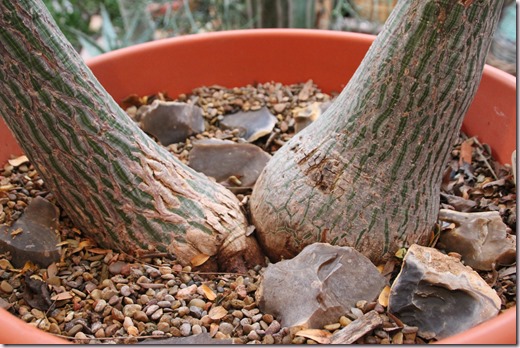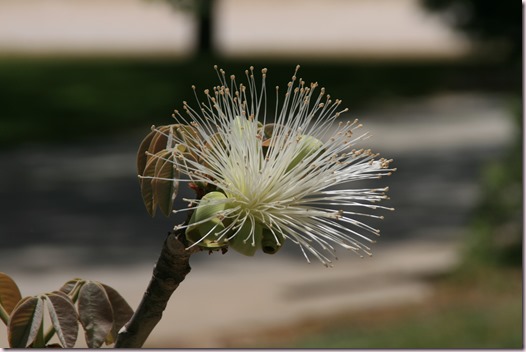
As promised, the other fat plant, pachypodium baronii, that was due to bloom, did, and this is what it looks like. Similar to the pachypodium lealii saundersii, but a whiter flower and some difference in the spines. And you can see the thick body that qualifies it as a fat plant.

Another fat plant is the adenium, also called a desert rose. This slender-leafed variety is from Somalia and hasn’t bloomed for me yet. 
But you can see its fat trunk where all fat plants hold water for times of drought. 
Most other adeniums have rounder leaves but still have the fat caudex.

The caudex of this adenium obesum is sitting higher in its pot and has some of its roots exposed, which is often done with adeniums to add interest. And this is what its bloom looks like.
Another fat plant is the ponytail palm, beaucarnea recurvata, which can grow very large and live a long time. Mine are not that big yet. They are fun to watch grow and fill out, but you might want to put them out of the reach of your cat. My cats seem to think the tips of grass-like fronds taste pretty good and can wreak havoc with the looks of the plant. 

Another form of fat plants are pachycaul trees that have the caudex for water and nutrition storage and few branches and can get really big, like, well, trees. My bombax elliopitcum, aka pseudobombax ellipticum, is about 25 years old and has bloomed several times in the spring before putting on new leaves for the summer. And it is as big as a small tree!


There is one more group of fat plants I want to tell you about, but I think I’ll save that for the next blog. Stay tuned.
Recent Comments